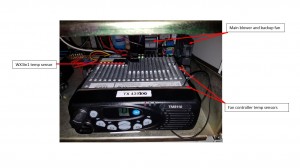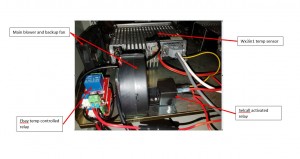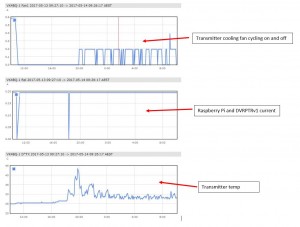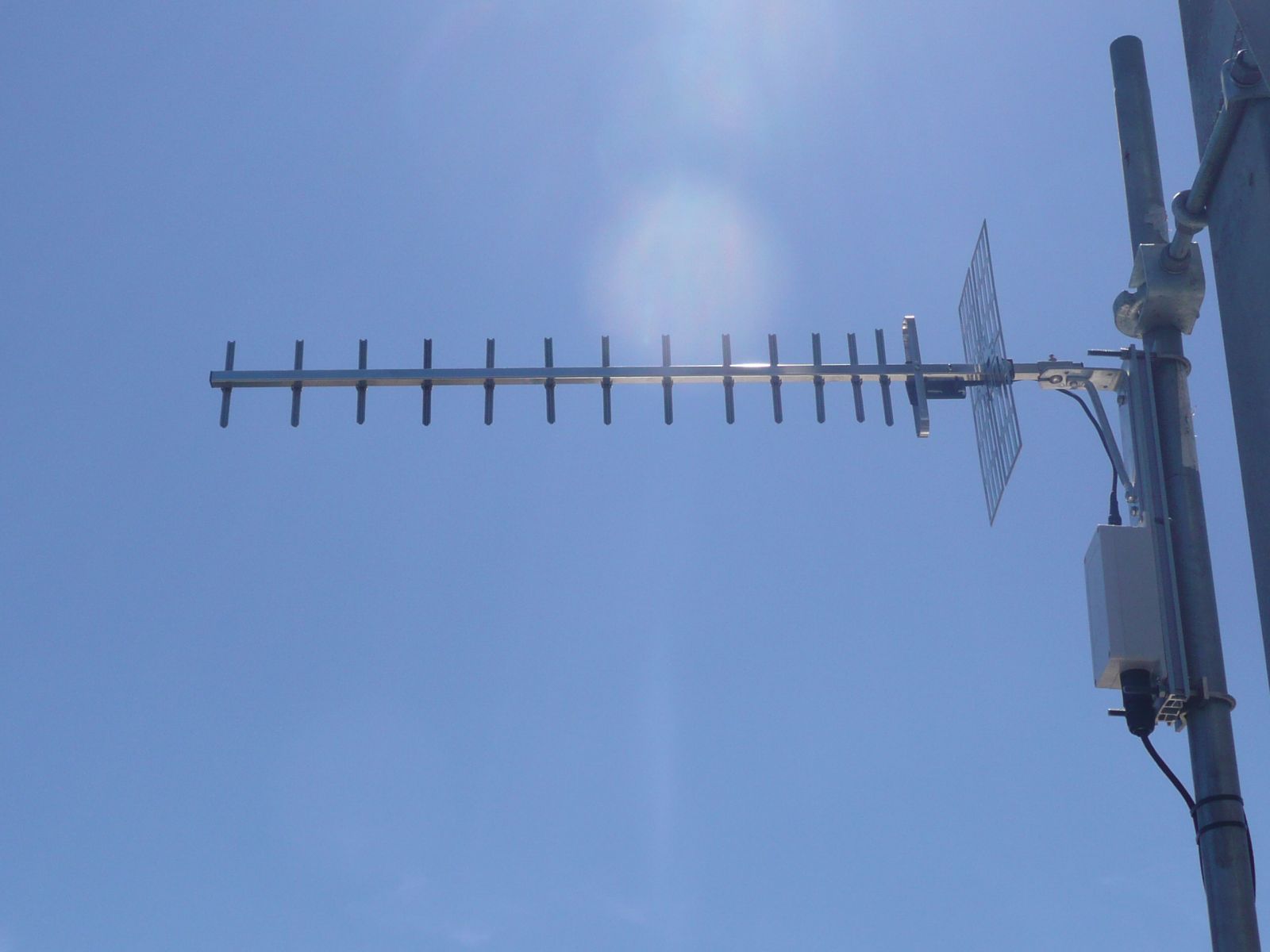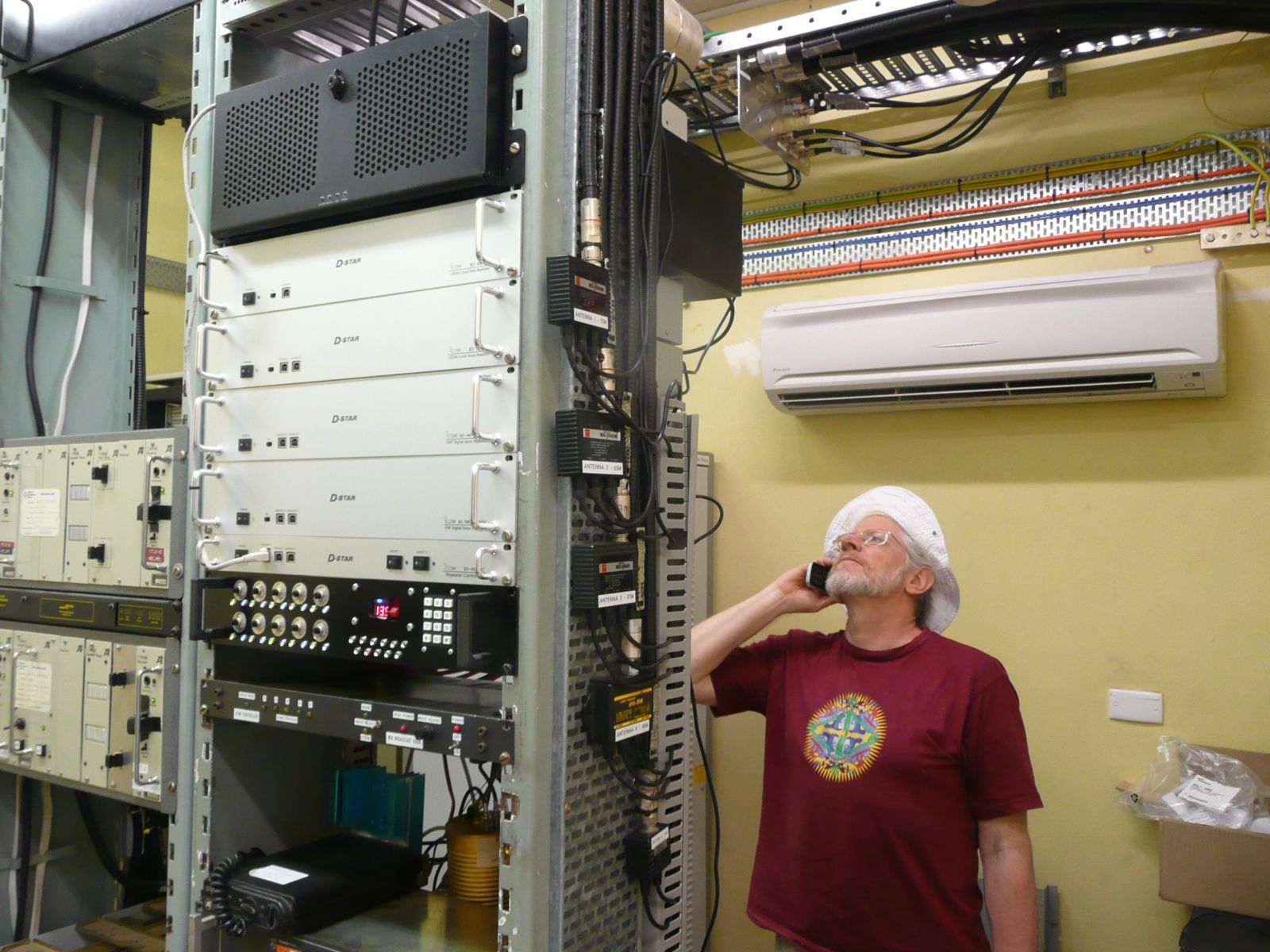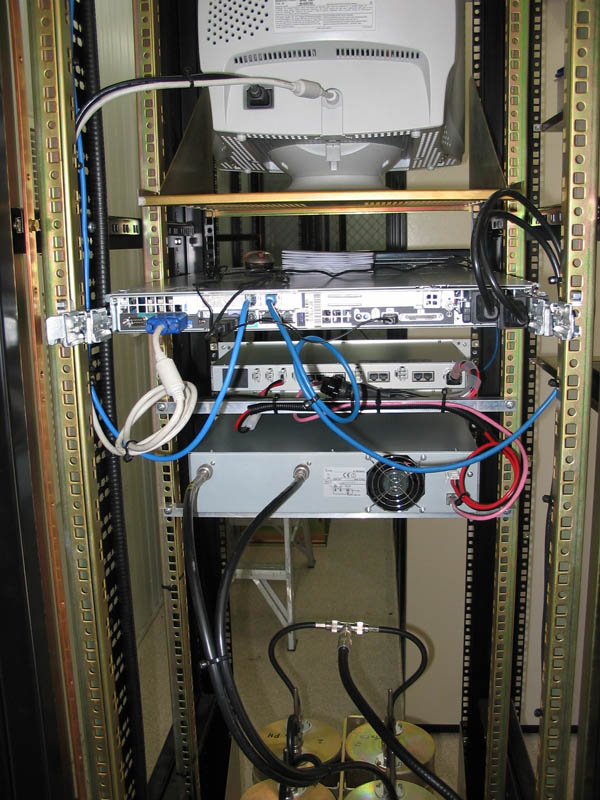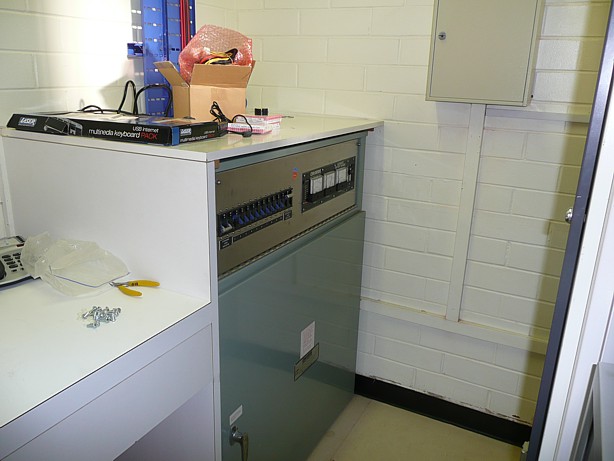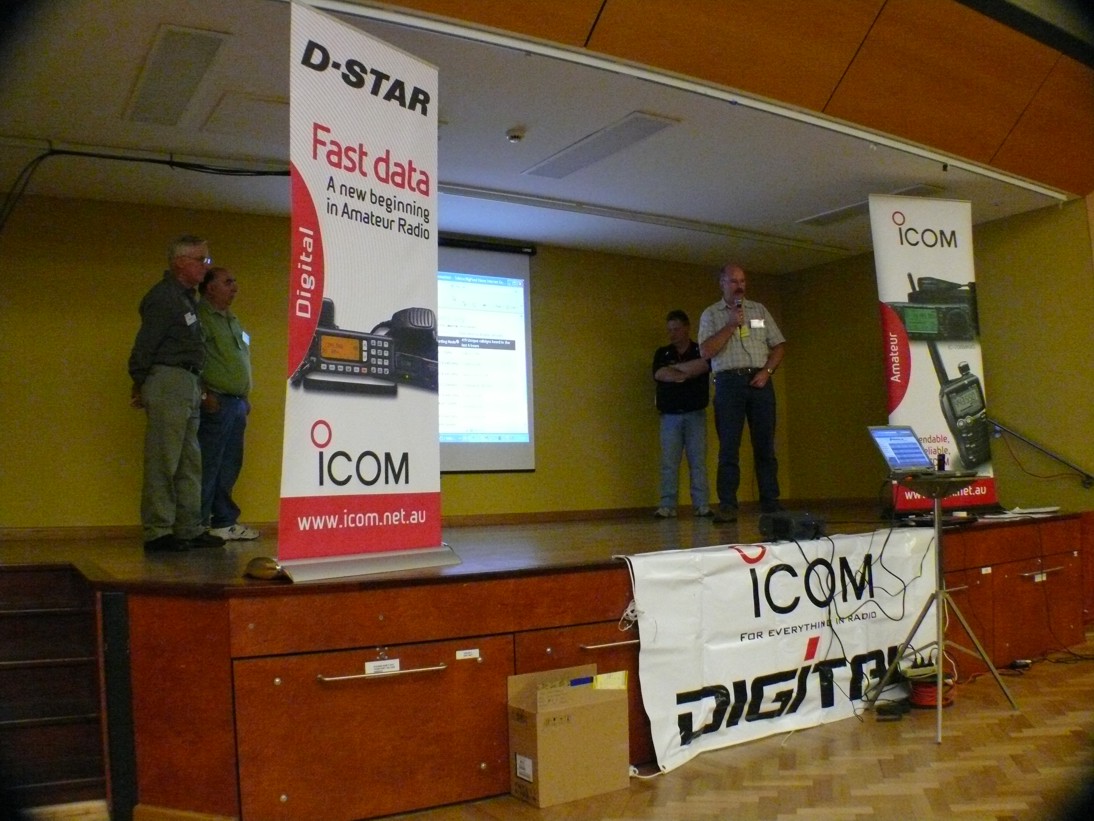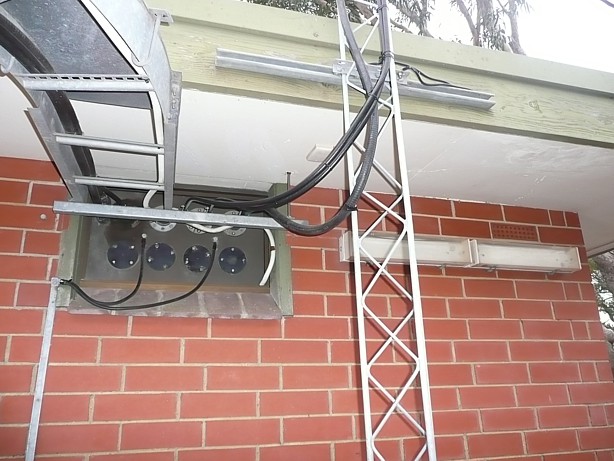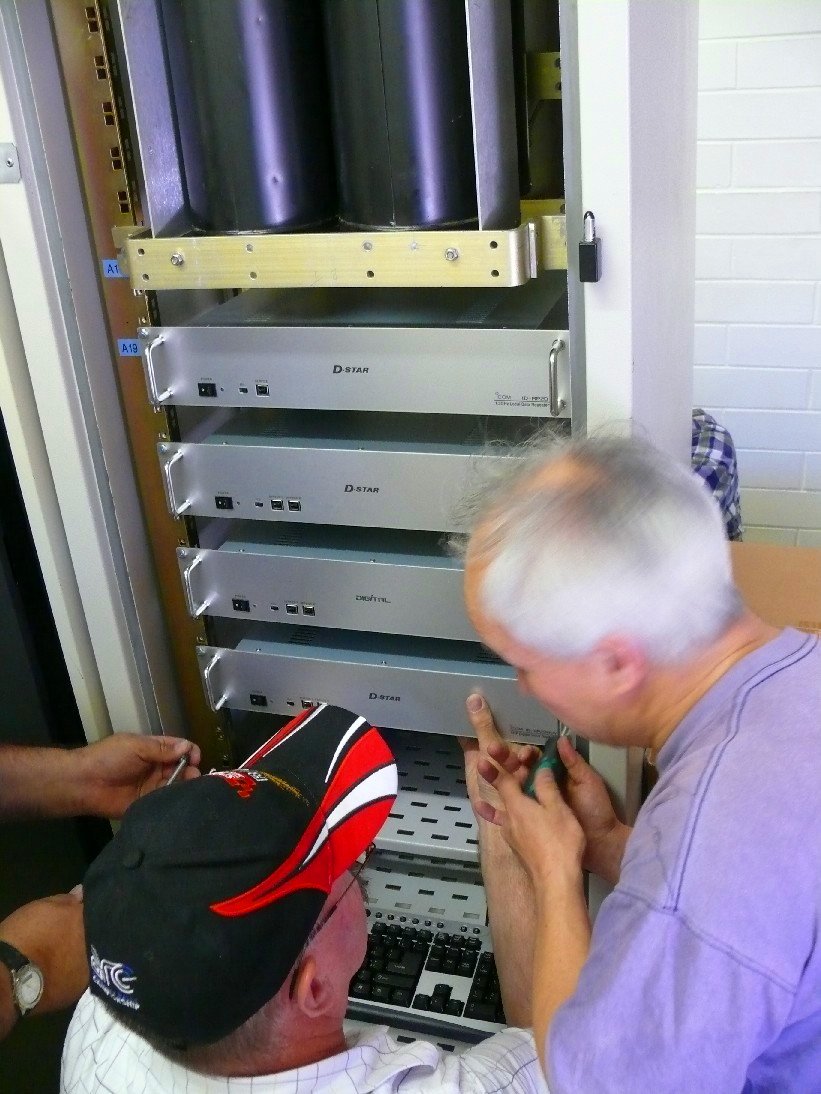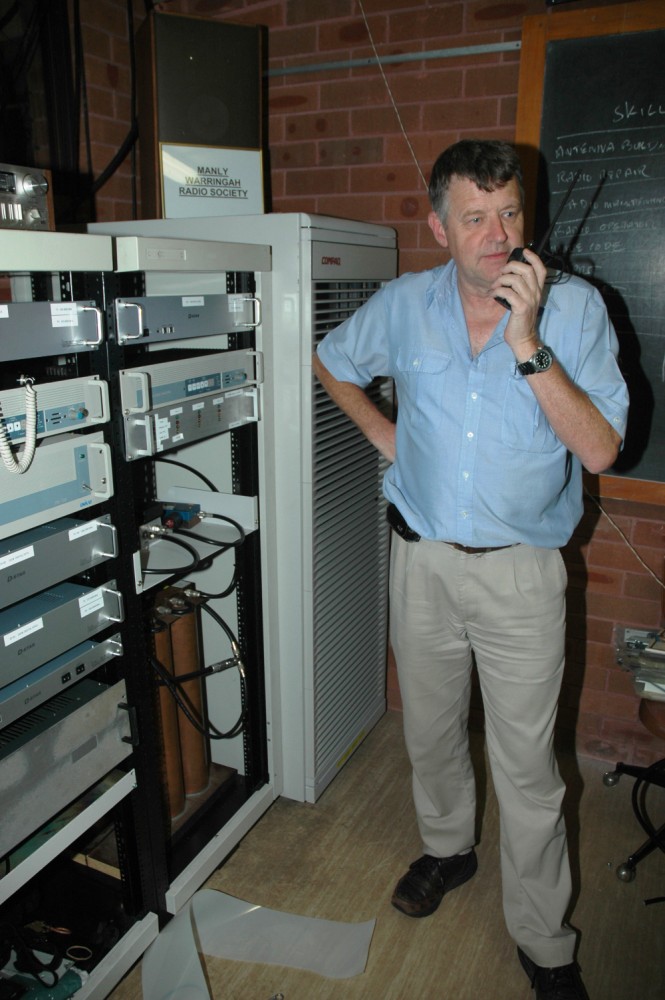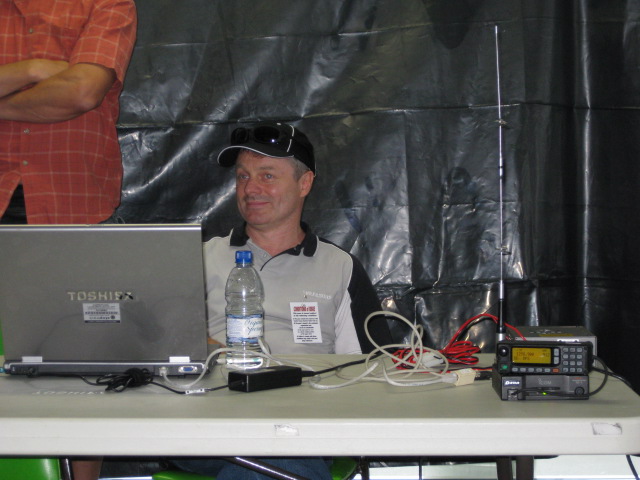The Blue Mountain DSTAR repeater is running on test, ready to be taken up to site. We are using APRS telemetry data to monitor and control the DSTAR repeater using the WX3in1 APRS modem. The analog inputs are being used to measure:
- Battery voltage
- Transmitter cooling fan current
- Raspberry Pi and DVRPTRv1 current
- DSTAR transmitter temperature.
(see VK4RBM-3 on aprs.fi)
The fan current and transmitter temperature is particularly handy as it shows equipment utilisation. When the repeater is active with users talking on it, the transmitter temperature rises, so the fan cycles in. Another benefit of monitoring the temperature on the transmitter is that a sudden spike in temperature will indicate a fan failure. Our design includes two fans, a main and backup that are both temperature controlled. These fans can be turned on and off independently.
The wxbits output module is being used to control some repeater functions. The repeater transmitter can be disabled using the transmit inhibit function. The repeater output power can also be controlled. The transmitter radio channel table has two channels programmed in; one at 25 watts and the other at 5 watts. The wxbits output module allows the radio transmitter channel to be changed remotely between high and low power. The low power channel uses less current than the high power channel. This is handy when the site battery level falls because you can keep the site operational for longer by changing the transmitter to low output power.
We have also included a selcall activated relay. The 12V bus that supplies the Raspberry Pi is fed via the relay in its relaxed state. When a selcall is sent to the transmit radio the relay is energised, disconnecting the 12V bus for 5 seconds. This feature is used to remotely power cycle the Raspberry Pi in the event that it locks up and becomes unresponsive.
A 3G modem is being used to provide internet access for the Raspberry Pi. The 3G modem has serial ports. These serial ports have been setup to provide a serial tunnel so that we can monitor and control the Plasmatronics solar regulator. The advantage here is that we can closely monitor the solar and battery condition. This also provides yet another method to hard reset the equipment as the load control from the solar regulator can be controlled remotely.
The 3G modem also provides additional functionality using its controllable dry contacts. Each piece of equipment can be individually turned on and off using text messages or the web interface. The benefit of this is that it provides an additional tertiary power cycling feature, should a hard reset of the Raspberry Pi or APRS modem be required. It also allows enabling either the main or backup fan.
